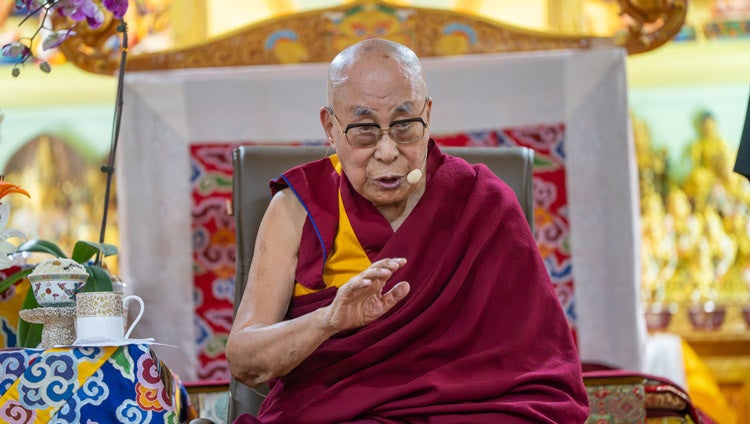The Dalai Lama Succession: Religious Tradition, Geopolitical Contest and Implications for South Asia
Nirupama Rao
18 July 2025Summary
The succession of the 14th Dalai Lama has become a pivotal issue at the intersection of religion and geopolitics. Traditionally guided by Tibetan Buddhist rituals, this sacred process is now entangled in a web of complications. The Dalai Lama has confirmed that his lineage will continue and that his reincarnation will be born in a “free country”, identified strictly through religious procedures under his personal office. Conversely, the Chinese government asserts authority over the succession process. This scenario raises the likelihood of two rival Dalai Lamas, with significant implications for India, regional stability and global diplomacy.
Traditional Succession Process
Tibetan Buddhism determines the Dalai Lama’s reincarnation through visions, omens, oracle consultations and recognition tests administered by senior lamas. A committee traditionally searches for boys born around the time of the previous Dalai Lama’s death, guided by spiritual signs and visions (often from sacred sites like Lhamo La-tso lake in Tibet). Candidates are tested by their ability to recognise objects from their predecessors’ life. The current (14th) Dalai Lama, Tenzin Gyatso, was discovered in 1939 through such methods. Historically, Tibetans have rejected the Qing-imposed ‘Golden Urn’ lottery system (1793), used only sparingly and under duress, as contrary to spiritual discernment.
The Dalai Lama’s Position
While initially open to ending the lineage, the 14th Dalai Lama reversed course in 2025, affirming that the institution will continue. He stated unequivocally that his reincarnation will not be born in Chinese-controlled territory but in a “free country” like India. His Office – specifically the Gaden Phodrang Trust – will be the sole authority managing the identification process. He has also opened the door to the possibility of a female successor, stating that the most qualified individual, regardless of gender, may embody Avalokiteshvara – the Bodhisattva of Compassion.
China’s Strategy
China maintains that it has sole authority to approve Tibetan Buddhist reincarnations, citing the 1793 Qing edict and enforcing its 2007 Order No. 5. This regulation mandates government oversight of all “Living Buddhas”, including the Dalai Lama. Beijing is expected to appoint a rival Dalai Lama after the 14th’s passing, possibly using rituals such as the Golden Urn to simulate traditional legitimacy. The Dalai Lama has categorically rejected any candidate selected under Chinese authority as illegitimate, urging Tibetans and global followers to do the same.
The Panchen Lama Precedent
In 1995, the Dalai Lama recognised Gedhun Choekyi Nyima as the 11th Panchen Lama. Within days, Chinese authorities abducted the child and his family. In his place, Beijing appointed another boy, Gyaltsen Norbu, who remains under state supervision and is not accepted by the Tibetan community. This precedent is critical. The Panchen Lama traditionally helps recognise the Dalai Lama’s reincarnation. With the Dalai Lama’s chosen Panchen Lama missing and China promoting its own, any attempt to use the Chinese Panchen for legitimacy will likely be rejected by the Tibetan exile community.
Implications for India
India is central to this unfolding succession for several reasons: It has hosted the Dalai Lama and the Central Tibetan Administration since 1959. It is home to the largest Tibetan exile community. It may be the birthplace of the next Dalai Lama, as indicated by the current Dalai Lama. A rival Dalai Lama installed by China in Lhasa could increase friction along the already tense Line of Actual Control. India may face pressure to respond – either by recognising the exile-appointed successor or by maintaining strategic ambiguity. The United States has already passed the Tibetan Policy and Support Act (2020), which backs the Tibetan people’s right to choose their religious leaders and threatens sanctions against Chinese officials who interfere. India may need to consider whether and how to align with such international positions.
Policy Recommendations for India
India should reaffirm religious autonomy as a principle and coordinate with like-minded democracies. Engaging with Buddhist leaders and the Tibetan community can bolster India’s image as a supporter of cultural freedom. Strategic ambiguity may help balance support without direct confrontation. Advanced preparation is essential for managing post-succession diplomacy.
Conclusion
The Dalai Lama’s succession is a defining moment not only for Tibetan Buddhism but also for regional geopolitics. The strong possibility of two rival Dalai Lamas – one chosen in exile, one selected by Beijing – threatens to deepen divisions and test diplomatic resolve. India, as host to the Dalai Lama and guardian of Tibetan culture, must carefully balance moral leadership with geopolitical pragmatism. Proactive, principled engagement can strengthen India’s regional standing and uphold the values it seeks to project globally.
. . . . .
Ambassador Nirupama Rao is a Distinguished Visiting Research Fellow at the Institute of South Asian Studies (ISAS), an autonomous research institute at the National University of Singapore (NUS). She can be contacted at nrao.01@nus.edu.sg. The author bears full responsibility for the facts cited and opinions expressed in this paper.
Pic Credit: X
-
 More From :
More From :
-
 Tags :
Tags :
-
 Download PDF
Download PDF



